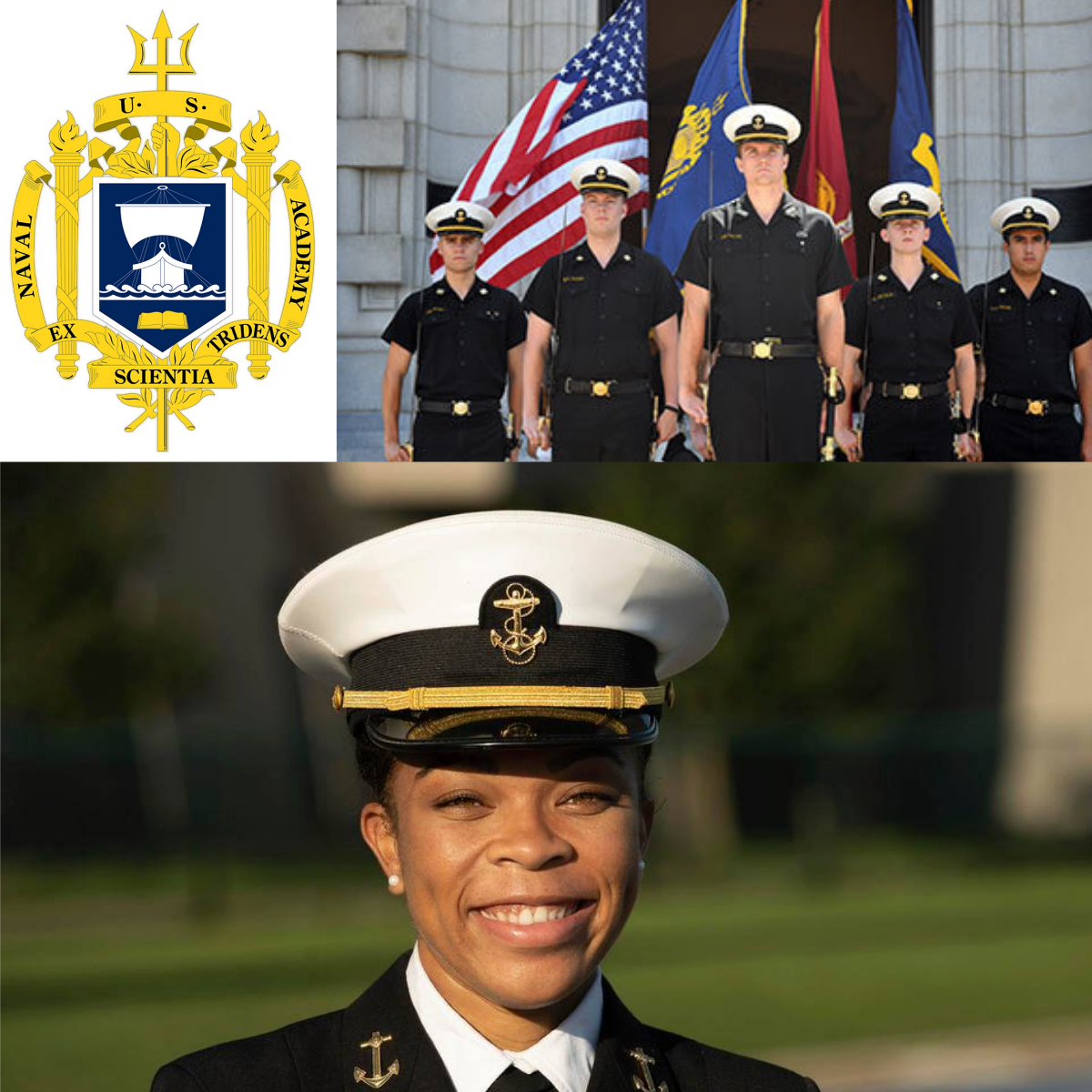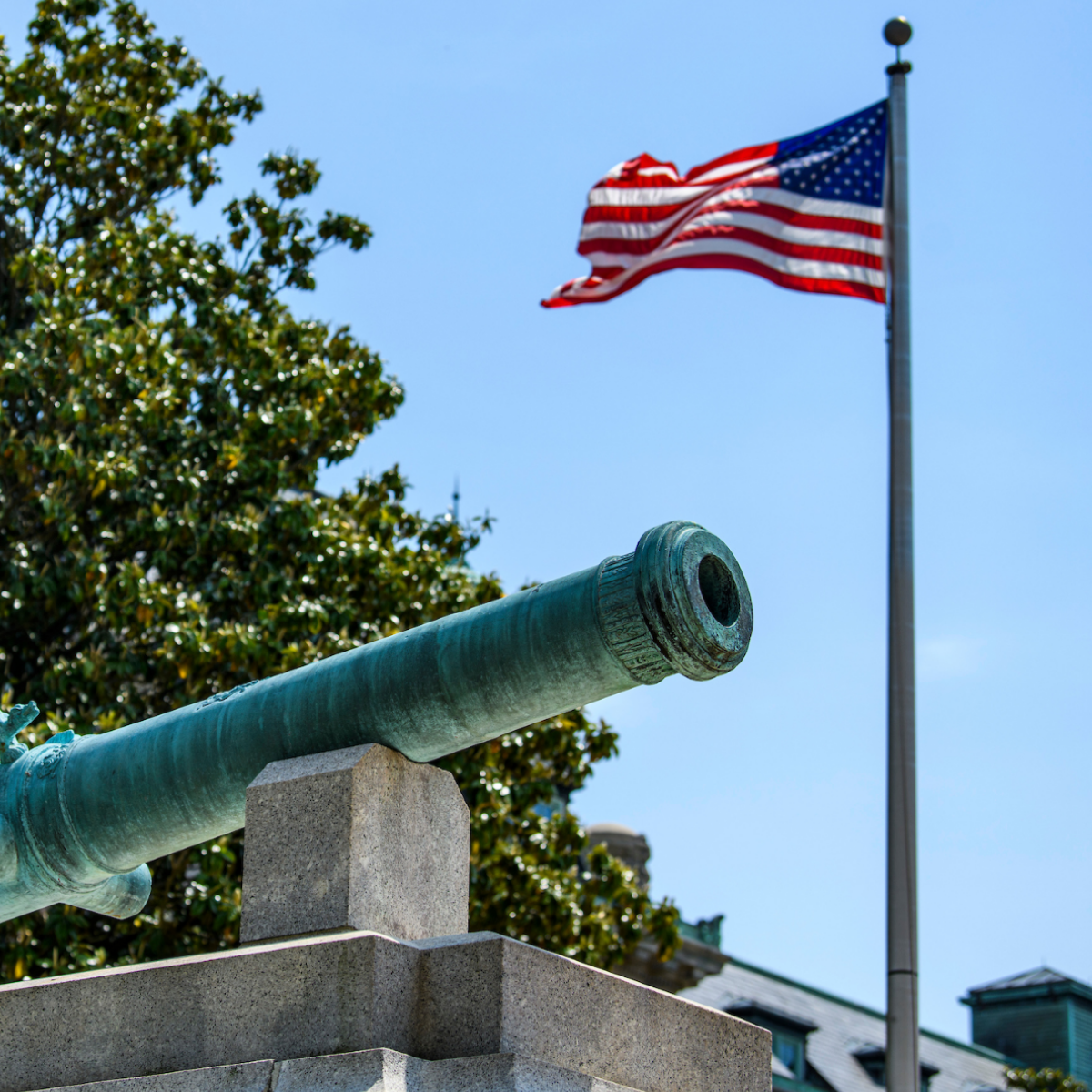
Using familiar military terminology, the student body of the United States Naval Academy is segmented into smaller, functional groups. Approximately 140 Midshipmen are assigned to live and train together in one of 30 companies. From there, 5 companies are further grouped into one of six battalions. Finally, all six battalions make up the top-level unit, the Brigade of Midshipmen. And, at the very top lies the highest position of leadership in the Brigade of Midshipmen, the Brigade Commander.
Selected from a group of First Class Midshipmen for demonstrating outstanding leadership, academic, and athletic capabilities, being chosen as Brigade Commander is a distinct honor that carries great responsibilities. Among these, the Brigade Commander executes the policies set by the Commandant of Midshipmen, and is responsible for daily activities and training of the Brigade, which includes Brigade efficiency and morale. The Brigade Commander is also ultimately accountable for the conduct of the Brigade of Midshipmen, and corrective actions when necessitated.
In addition to these broader functions, there are specific duties the Brigade Commander is also responsible for. In support of the USNA Commandant’s goals and objectives, the Brigade Commander coordinates the drafting of the Brigade’s goals. The Brigade Commander also attends chain of command meetings and policy boards as the representative of the Brigade. When new policies are issued, the Brigade Commander ensures that these policy changes are promulgated and enacted throughout the Midshipmen chain of command.
Similar to high-ranking officers in the fleet, the Brigade Commander sits on various selection boards, including the Brigade Striper board, which determines the next Brigade Commander, as well as the Aptitude and Honor boards. Utilizing their supervisory skills, the Brigade Commander also oversees the turnover process for new stripers. Positions directly reporting to the Brigade Commander include the Brigade Sergeant Major, the senior Second Class Midshipman.
As the highest leadership position, the Brigade Commander is the only Midshipman eligible to wear the six striper uniform insignia. However, the role of Brigade Commander only lasts for one semester. Current Brigade Commander Ryan Chapman was selected for the prestigious position in the Spring of 2020 and has been challenged like none of his predecessors, as he manages morale and the day-to-day Brigade activities amid a pandemic.
Chapman’s recently announced successor is making history in her own right as the first black female Brigade Commander. Midshipman First Class Sydney Barber, who will take command in the Spring semester, will also be the sixteenth female Brigade Commander since the Naval Academy began admitting women 44 years ago.
The first female USNA Brigade Commander, Juliane Gallina, graduated from the Naval Academy in 1992 and retired from active duty service with a rank of Commander after 21 years of service. After spending a decade in an executive leadership position at IBM, she was selected for the position of Chief Information Officer at the Central Intelligence Agency in 2019.
Occasionally, a former USNA Brigade Commander finds themselves returning to The Yard decades later to serve in a completely different role. Class of 1978’s Brigade Commander, Arthur Athens, served in the United States Marine Corps. During his military career, Colonel Athens commanded units in several Marine Aircraft Wings, and also served as an instructor and academic dean at the Marine Corps equivalent of Top Gun, the Marine Aviation Weapons and Tactics Squadron-I. He has also served as a White House Fellow during the Reagan Administration, and Special Assistant to NASA. In 2007, Colonel Athens made his way back to the Naval Academy to serve as the Director of the Vice Admiral James B. Stockdale Center for Ethical Leadership.
Serving the Brigade of Midshipmen as its Commander, and having the opportunity to put years of leadership training into practice, is both a tremendous responsibility and great honor. Additionally, as former commanders have noted, it is a role that can only be accomplished through teamwork with other stripers selected by the board.






